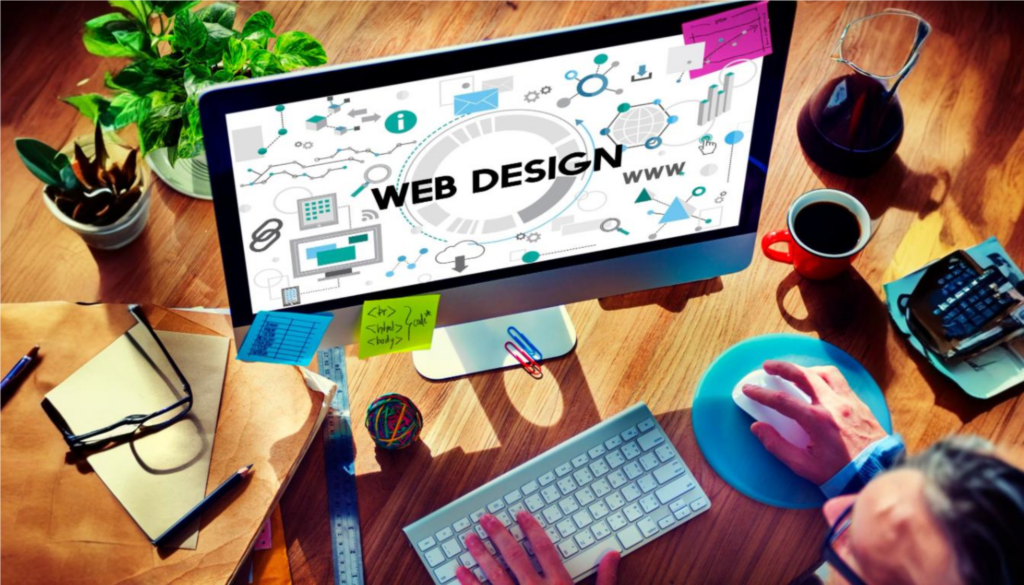
The web design industry has witnessed rapid evolution in recent years, with businesses across the globe adapting to cutting-edge trends to create captivating and user-friendly web experiences. As we step into 2025, web designers and developers are exploring new possibilities to deliver websites that not only stand out but also engage users like never before. Here are the top 10 web design trends for 2025 that are set to transform the digital landscape.
1) Immersive Web Experiences
Businesses are now focusing on creating immersive, interactive web experiences that grab attention. Whether it’s through augmented reality (AR) integrations, advanced animations, or interactive storytelling, websites are no longer just static pages. These features enhance user engagement and offer personalized experiences to visitors.
2) AI-Powered Design Tools
In 2025, AI-powered design tools are revolutionizing the design and development process. Tools like Figma, Webflow, and Adobe XD are now enhanced with AI functionalities that automate repetitive tasks, optimize layout suggestions, and personalize design elements based on user behavior. This trend empowers designers to streamline workflows and produce faster, more accurate designs.
3) Responsive Design 2.0
While responsive design has been around for a while, 2025 marks the rise of Responsive Design 2.0. With more devices entering the market, from foldable screens to VR headsets, designers need to ensure that websites are fully adaptive to all screen sizes and formats. Ensuring a seamless, consistent user experience across devices is now a necessity.
4) Virtual Reality and Augmented Reality Integration
With browsers like Firefox Reality and WebXR APIs offering wider support for VR and AR technologies, virtual reality is finally making its mark on web design. From online retail to real estate, businesses are incorporating VR and AR experiences to engage users, allowing them to explore products or spaces in an immersive, virtual environment.
5) Sustainability in Web Design
Sustainable web design is emerging as a crucial trend in 2025. As more businesses prioritize eco-friendly practices, web designers are focusing on building energy-efficient websites that reduce data consumption and carbon footprints. Techniques like lazy loading, optimized media, and green hosting solutions are helping to minimize the environmental impact of websites.
6) Minimalistic and Dark Mode Designs
Minimalism continues to dominate, with an added focus on dark mode options. Not only do dark mode designs reduce eye strain and energy usage on OLED screens, but they also provide a sleek, modern aesthetic that appeals to users. Expect more websites to offer seamless toggling between light and dark modes for a more personalized user experience.
7) Content-Driven Design
In 2025, content is still king. With search engines prioritizing user experience and high-quality content, businesses are investing in well-crafted, engaging, and conversational content. Web designers are also working closely with content strategists to design layouts that enhance readability, simplify navigation, and prioritize the delivery of valuable information.
8) Micro-Interactions and Animations
Subtle, yet powerful, micro-interactions are becoming more prevalent on websites. These small animations or interactive elements—like button hovers, loading spinners, or scroll-triggered animations—help to improve the user experience by providing instant feedback and making the website feel more dynamic.
9) Custom Illustrations and Bold Colors
2025 is seeing a rise in the use of custom illustrations and bold color schemes that reflect brand personality. Vibrant, dynamic colors are replacing the old minimalist color palettes, and businesses like Asana and Instagram are leading the charge with striking visual redesigns. This trend helps brands stand out in an increasingly crowded digital space.
10) Localization and Personalization
With businesses targeting global audiences, localization and personalization have become critical web design strategies. Designers are focusing on creating websites that adapt content, language, and design elements based on the user’s geographical location, preferences, and past behavior. This trend helps businesses create more meaningful connections with their audience, boosting engagement and conversions.
Embrace the Future of Web Design with DreamZone:
If you’re looking to stay ahead of these trends and master the latest web design techniques, DreamZone offers comprehensive web design courses tailored for beginners and professionals alike. As a leading arm of CADD Centre Training Services, DreamZone provides hands-on learning in industry-relevant skills, from UI/UX design to responsive web development.
Sign up today to get certified in web design and start creating websites that are not only visually stunning but also innovative, user-friendly, and optimized for the future.
Image by rawpixel.com on Freepik
FAQs
What is the most popular web design tools in 2025?
In 2025, top web design tools include:
- Figma – Leading for real-time collaboration.
- Framer AI – AI-driven interactive designs.
- Wix ADI – AI-powered website builder.
- Canva – Easy-to-use templates.
- UIzard – Intuitive UI design.
How can I make my website more user-friendly in 2025?
Optimize your website in 2025 with AI-driven design, mobile responsiveness, fast loading speed, and seamless navigation. Follow WCAG guidelines for accessibility and enhance user experience with clear CTAs.
Is learning about AI important for web designers in 2025?
Yes, AI is crucial for web designers in 2025. AI-driven design tools streamline workflows, enhance UX with personalization, automate coding, and optimize SEO. Staying updated with AI trends boosts creativity and efficiency
What are the most searched web design trends for 2025?
The most searched web design trends for 2025 include minimalist design, dark mode, mobile-first design, AI-powered websites, 3D visuals, voice user interface (VUI), and responsive design. These trends focus on enhancing user experience, boosting website performance, and improving SEO
What are the benefits of enrolling in DreamZone’s Web Designing Course?
Enrolling in DreamZone’s Web Designing Course provides hands-on training in UI/UX design, responsive web design. Taught by industry experts, the course includes certification, placement assistance, and live projects to build a strong web design portfolio, preparing you for roles like Web Designer, UI/UX Designer, and Front-End Developer
